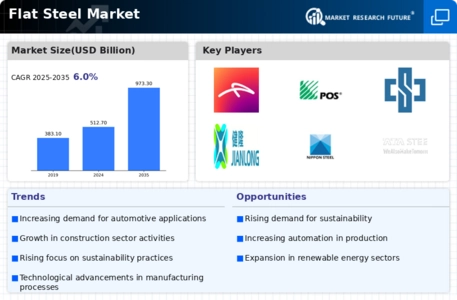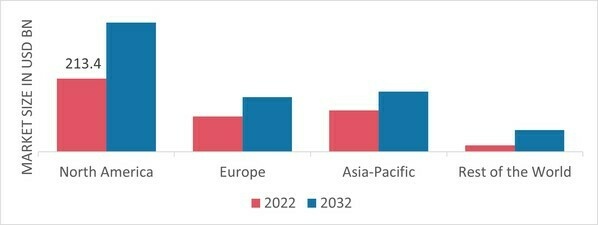Market Analysis
Flat Steel Market (Global, 2024)
Introduction
The Flat Steel Market is poised to undergo significant transformations driven by evolving consumer demands, technological advancements, and shifts in global economic dynamics. As industries increasingly prioritize sustainability and efficiency, the flat steel sector is adapting to meet these challenges through innovative production methods and enhanced material properties. The growing applications of flat steel in construction, automotive, and manufacturing sectors underscore its critical role in modern infrastructure and industrial development. Furthermore, geopolitical factors and trade policies are influencing supply chains and pricing strategies, making it essential for stakeholders to navigate this complex landscape. Understanding the current trends, competitive landscape, and potential disruptions will be crucial for businesses aiming to capitalize on opportunities within this vital market.
PESTLE Analysis
- Political
- In 2024, the flat steel market is heavily influenced by government policies aimed at reducing carbon emissions. The European Union has implemented a Carbon Border Adjustment Mechanism (CBAM) that imposes a tax of €50 per ton of CO2 emissions on imported steel products. This policy is designed to protect local industries and encourage sustainable practices among steel producers. Additionally, trade relations between the U.S. and China remain tense, with tariffs on steel imports reaching 25%, impacting pricing and availability in the global market.
- Economic
- The flat steel market is experiencing fluctuations due to varying demand in key sectors such as automotive and construction. In 2024, the global demand for flat steel is projected to be around 1.5 billion tons, with the automotive sector alone accounting for approximately 25% of this demand. Furthermore, inflation rates in major economies are hovering around 3.5%, affecting production costs and consumer purchasing power. The cost of raw materials, particularly iron ore, has also seen a rise, with prices averaging $120 per ton in early 2024.
- Social
- Consumer preferences are shifting towards sustainable and eco-friendly products, influencing the flat steel market. In 2024, surveys indicate that 70% of consumers are willing to pay a premium for products made from recycled steel. This trend is prompting manufacturers to invest in recycling technologies and sustainable practices. Additionally, the workforce in the steel industry is undergoing changes, with an estimated 15% of jobs being automated, leading to a need for retraining programs for approximately 200,000 workers in the sector.
- Technological
- Technological advancements are playing a crucial role in the flat steel market, particularly in production efficiency and sustainability. In 2024, the adoption of electric arc furnaces (EAF) has increased, with around 30% of flat steel production now utilizing this technology, which reduces energy consumption by up to 75% compared to traditional methods. Furthermore, innovations in digital manufacturing and Industry 4.0 technologies are expected to enhance operational efficiencies, with companies investing an estimated $1 billion in smart manufacturing solutions this year.
- Legal
- Regulatory frameworks are becoming increasingly stringent in the flat steel market, particularly concerning environmental compliance. In 2024, the International Organization for Standardization (ISO) has introduced new standards (ISO 14001:2015) that require steel manufacturers to implement comprehensive environmental management systems. Non-compliance can result in fines up to €1 million, pushing companies to prioritize sustainability in their operations. Additionally, labor laws are evolving, with new regulations mandating a minimum wage increase to $15 per hour in several states, impacting operational costs.
- Environmental
- Environmental concerns are at the forefront of the flat steel market in 2024, with a growing emphasis on reducing carbon footprints. The steel industry is responsible for approximately 7% of global CO2 emissions, prompting initiatives to lower this figure. In response, many companies are committing to net-zero emissions by 2050, with interim targets set to reduce emissions by 30% by 2030. Furthermore, the use of renewable energy sources in steel production is on the rise, with an estimated 20% of steel produced in 2024 coming from renewable energy-powered facilities.
Porter's Five Forces
- Threat of New Entrants
- Medium - The flat steel market has significant barriers to entry, including high capital requirements and established brand loyalty among consumers. However, advancements in technology and the potential for niche markets may encourage new players to enter, leading to a moderate threat level.
- Bargaining Power of Suppliers
- Medium - Suppliers in the flat steel market have a moderate level of bargaining power due to the concentration of raw materials and the need for quality inputs. While there are multiple suppliers available, the reliance on specific materials can give certain suppliers leverage in negotiations.
- Bargaining Power of Buyers
- High - Buyers in the flat steel market have substantial bargaining power, as they can choose from a variety of suppliers and products. The availability of alternatives and the price sensitivity of buyers contribute to their strong negotiating position, pushing manufacturers to offer competitive pricing and quality.
- Threat of Substitutes
- Medium - The threat of substitutes in the flat steel market is moderate, as alternative materials such as aluminum and composites are available for certain applications. However, the unique properties of flat steel, such as strength and durability, limit the extent to which substitutes can replace it in many industrial applications.
- Competitive Rivalry
- High - The competitive rivalry in the flat steel market is intense, with numerous established players vying for market share. Price competition, product differentiation, and innovation are key factors driving rivalry, leading to a highly competitive environment where companies must continuously improve to maintain their position.
SWOT Analysis
Strengths
- High demand in construction and automotive industries.
- Cost-effective production processes.
- Versatile applications across various sectors.
- Established supply chain and distribution networks.
- Technological advancements improving product quality.
Weaknesses
- Vulnerability to fluctuations in raw material prices.
- Environmental concerns related to production processes.
- High competition leading to price wars.
- Dependence on economic cycles and infrastructure spending.
- Limited differentiation in product offerings.
Opportunities
- Growing demand for lightweight and high-strength steel.
- Expansion into emerging markets with increasing infrastructure needs.
- Investment in sustainable production technologies.
- Potential for innovation in product development.
- Government initiatives promoting steel usage in green projects.
Threats
- Increasing tariffs and trade restrictions.
- Rising competition from alternative materials.
- Economic downturns affecting demand.
- Supply chain disruptions due to geopolitical tensions.
- Environmental regulations tightening production processes.
Summary
The Flat Steel Market in 2024 is characterized by strong demand driven by key industries such as construction and automotive, alongside cost-effective production methods. However, it faces challenges from raw material price volatility and environmental concerns. Opportunities lie in expanding into emerging markets and investing in sustainable technologies, while threats include trade restrictions and competition from alternative materials. Strategic focus on innovation and sustainability will be crucial for navigating this competitive landscape.

















Leave a Comment